Sonus Paradisi
Rotterdam Hoofdorgel, 1973 [Hauptwerk]
Rotterdam Hoofdorgel, 1973 [Hauptwerk]
No se pudo cargar la disponibilidad de retiro
The organ of the Laurenskerk in Rotterdam, Netherlands
The large gothic church of Rotterdam was built in 15th century. The large organ which we can hear in the church today was built by Marcussen & Son in 1973, the organ case was designed by the architect J. W. Besemer. The instrument is based on 32-foot pedal, it consists of six divisions (Rugwerk, Hoofdwerk, Bovenwerk, Borstwerk, Chamadewerk and Pedaal). It is completely mechanical organ with 85 speaking stops and ca. 7600 pipes. It is said to be the largest purely mechanical organ in Europe. There is, however, the Barker mechanism to be switched on optionally by a foot lever to help the organist when all the manuals are coupled together. However, the full instrument can be operated without this device very well.
One striking feature of the instrument is its multi-rank Principal stops. Practically all the Principals and Octaves 16', 8', 4' of all the divisions are made of more than one unisono souding ranks. The organ was designed to allow the performance of all organ literature. Indeed, the plenitude of stops, the complete set of horizontal reeds, the French type of reeds, strings in a swell box, rich selection of wide scaled mutations, complete Principal pyramid, full range of stops in pedal - it is all one can dream of.
Presented to you by Leonart Studio, your authorised reseller for Sonus Paradisi in Switzerland (shipped internationally). Get your digitally sampled historical organs for the use with the Hauptwerk virtual instrument software.
Share this Sample Set
![Rotterdam Hoofdorgel, 1973 [Hauptwerk]](http://artful.shop/cdn/shop/files/ss_RotterdamMain1.jpg?v=1693279529&width=1445)
![Rotterdam Hoofdorgel, 1973 [Hauptwerk]](http://artful.shop/cdn/shop/files/ss_RotterdamMain2.jpg?v=1693279530&width=1445)
![Rotterdam Hoofdorgel, 1973 [Hauptwerk]](http://artful.shop/cdn/shop/files/ss_RotterdamMain3.jpg?v=1693279529&width=1445)
![Rotterdam Hoofdorgel, 1973 [Hauptwerk]](http://artful.shop/cdn/shop/files/ss_RotterdamMain4.jpg?v=1693279530&width=1445)
![Rotterdam Hoofdorgel, 1973 [Hauptwerk]](http://artful.shop/cdn/shop/files/ss_RotterdamMain5.jpg?v=1693279529&width=1445)
![Rotterdam Hoofdorgel, 1973 [Hauptwerk]](http://artful.shop/cdn/shop/files/ss_RotterdamMain6.jpg?v=1693279530&width=1445)
![Rotterdam Hoofdorgel, 1973 [Hauptwerk]](http://artful.shop/cdn/shop/files/ss_RotterdamMain7.jpg?v=1693279530&width=1445)
![Rotterdam Hoofdorgel, 1973 [Hauptwerk]](http://artful.shop/cdn/shop/files/ss_RotterdamMain8.jpg?v=1693279529&width=1445)
![Rotterdam Hoofdorgel, 1973 [Hauptwerk]](http://artful.shop/cdn/shop/files/ss_RotterdamMain9.jpg?v=1693279529&width=1445)
![Rotterdam Hoofdorgel, 1973 [Hauptwerk]](http://artful.shop/cdn/shop/files/ss_RotterdamMain10.jpg?v=1693279530&width=1445)
![Rotterdam Hoofdorgel, 1973 [Hauptwerk]](http://artful.shop/cdn/shop/files/ss_RotterdamMain11_c8a78de9-72e1-408b-ae6e-d2db6f013175.jpg?v=1693279527&width=1445)
Specification (stop list)
-
Manual I
Rugwerk
Quintadeen 16'
Praestant 8'
Holpijp 8'
Quintadeen 8'
Octaaf 4'
Roerfluit 4'
Quint 2 2/3'
Octaaf 2'
Woudfluit 2'
Sifflet 1 1/3'
Sesquialter 2-4 st.
Mixtuur 6-8 st.
Scherp 4-6 st.
Dulciaan 16'
Trompet 8'
Kromhoorn 8'
Tremulant -
Manual II
Hoofdwerk
Praestant 16'
Octaaf 8'
Open fluit 8'
Quint 5 1/3'
Octaaf 4'
Spitsfluit 4'
Octaaf 2'
Ruispijp 3-4 st.
Mixtuur 8-10 st.
Scherp 6-8 st.
Trompet 16'
Trompet 8'
Cornet 5 st. -
Manual III
Bovenwerk (swell) (III. man.)
Gedekt 16'
Praestant 8'
Baarpijp 8'
Roerfluit 8'
Viola di Gamba 8'
Viola di Gamba 8' (beating)
Octaaf 4'
Open fluit 4'
Terts 3 1/5'
Roerquint 2 2/3'
Nachthoorn 2'
Terts 1 3/5'
Mixtuur 5-7 st.
Cimbel 3 st.
Bombarde 16'
Trompette 8'
Voix humaine 8'
Clairon 4'
Tremulant
Chamadewerk (III./V. man.)
Trompeta magna 16' (desc.)
Trompeta brillante 8' (bas/desc.)
Trompeta de batalla 8' (bas/desc.)
Clarin fuerte 4' (bas/desc.)
Clarin 2' (bas)
Orlos 8' (bas/desc.) -
Manual IV
Borstwerk
Gedekt 8'
Praestant 4'
Blokfluit 4'
Nasard 2 2/3'
Octaaf 2'
Gedekte fluit 2'
Octaaf 1'
Tertiaan 2 st.
Scherp 4-5 st.
Regaal 16'
Kromhoorn 8'
Regaal 8'
Tremulant -
Pedal
Praestant 32'
Octaaf 16'
Open Subbas 16'
Gedekte Quint 10 2/3'
Octaaf 8'
Gemshoorn 8'
Roerquint 5 1/3'
Octaaf 4'
Koppelfluit 4'
Nachthoorn 2'
Dwarsfluit 1'
Ruispijp 5 st.
Cornet 3 st.
Mixtuur 10 st.
Bazuin 32'
Bazuin 16'
Fagot 16'
Trompet 8'
Trompet 4'
Zink 2' -
Other specification
Normal intramanual couplers (I - II, III - II, IV - II) available, couplers to the pedal (I - Ped, II - Ped, III - Ped) available. Bovenwerk can be muted by drawing the Bovenwerk af drawstop.
The Chamadewerk is normally operated from the IIIrd manual by means of a drawstop called Chamade aan. This is the operation as designed by the manufacturer of the organ.
Our virtual model extends the use of the Chamade division by making it a solo division which can be operated either from the IIIrd manual (as the original), or alternatively from the independent Vth manual. Thanks to this arrangement, Hauptwerk Master Couplers work and can be used to expend the number of couplers of this organ.
The original organ has also foot levers to operate the couplers. These were not reproduced as all foot levers only duplicate an operation of a dedicated drawstop. Only the drawstop were reproduced in our virtual model.
One special foot lever exists on the real instrument. It is called a "Barker". This enables the barker machine on the IInd manual to help the player when the instrument is under the full load and fully coupled. This was not reproduced as on digital consoles such mechanism is not needed.
History
The organ of the Laurenskerk in Rotterdam, NetherlandsRotterdam Main Organ
The large gothic church of Rotterdam was built in 15th century. The church was completed in 1525. Four hundred years later it was almost destroyed by a German bombardment in May of the year 1940. The interior of the sanctuary was entirely lost due to fire. There were left only the outer walls and a part of the tower. The restoration of the church was done after the World War, between 1947-1968.
The original church had a large 3 manual organ of Hans Goltfuss from 1644, but a new instrument was to replace it in 1790. The work on the new instrument was not finished before 1828 while several organbuilders successively worked on it. In 1845 Bätz enlarged this instrument to arrive at 72 stops. Nevertheless, this instrument was destroyed completely with the church during the war time. The large organ which we can hear in the church today was built by Marcussen & Son in 1973, the organ case was designed by the architect J. W. Besemer. The instrument is based on 32-foot pedal, it consists of six divisions (Rugwerk, Hoofdwerk, Bovenwerk, Borstwerk, Chamadewerk and Pedaal). It is completely mechanical organ with 85 speaking stops and ca. 7600 pipes. It is said to be the largest purely mechanical organ in Europe. There is, however, the Barker mechanism to be switched on optionally by a foot lever to help the organist when all the manuals are coupled together. However, the full instrument can be operated without this device very well.
One striking feature of the instrument is its multi-rank Principal stops. Practically all the Principals and Octaves 16', 8', 4' of all the divisions are made of more than one unisono souding ranks. I have heard this special feature in Spanish organs for the first time (Palma di Mallorca, Santanyi ...) and it makes the sound of the Principal chorus considerably wide and deep. The timbre gets characteristically rich what cannot be achieved easily if a conventional single rank Principal stops are used. For Hauptwerk recording, this constitutes a special challenge, since the "chorus effect" of the pipes which are often not exactly in tune makes looping really difficult. Only very long samples (around 9-11 seconds) are usable for the virtual model of the organ. Another noteworthy feature is the composition of the mixtures which have unusually high number of ranks as well. The Cimbal of the Bovenwerk is remarkable for its neo-baroque composition including a quart and a sext.
A beta tester comments: "This is a remarkably colorful and beautiful organ whose sound is surprisingly gentle. None of the voicing feels harsh or pushed. Instead, we get double-rank principal stops and large mixtures with many ranks of gently-voiced pipework that result in a natural, unforced sound. In fuller ensembles, the organ roars, but it never screams - even when the chamades are playing. The sound remains beautiful and comfortable even when played for several hours in headphones."
The organ was designed to allow the performance of all organ literature. Indeed, the plenitude of stops, the complete set of horizontal reeds, the French type of reeds, strings in a swell box, rich selection of wide scaled mutations, complete Principal pyramid, full range of stops in pedal - it is all one can dream of. First, I was puzzled by the absense of the French Oboe and I had even thought of adding one virtually, but then, listening to the CDs recorded at the Rotterdam organ by Mr. Hayo Boerema organist-titulaire, convinced me that that such an addition is not needed. The swell trumpet with a nasard can be used as a convincing substitute. Thus, wide range or organ literature from Renaissance, Baroque, Romanticism up to the modern times can be performed adequately on the instrument.
Features
Hauptwerk version
The sample set can be used in Hauptwerk version 4.2 and higher, the Advanced version is necessary due to the size of the virtual instrument. Version 1.45 of the sample set published in June, 2021. Several subcomponents were updated to version 1.46 in February,2022.
New in version 1.46 (surround variant only)
Clairon on Bovenwerk and Clairon Fuerte are better sounding in the top octave.
New in version 1.45 (surround and dry variants)
Pipe Coupling, Pipe Detuning features, Mixer tab.
Chamadas play from an added fifth manual. This makes the Hauptwerk Master Couplers fully compatible with the Chamade division.
The Compass
The original compass of the manuals is 56 keys (extended to 58 keys) and the pedal is 30 (extended to 32 keys).
Sample Quality
The samples are offered in 24bit/48kHz quality, multiple releases (3 levels). Plain wave formant (no encryption). The reverberation time is up to 6 seconds for the ambiental version. The sample set is offered in the surround (four channels) and in the wet (two channels) and in the dry (dual-mono) variants.
Tremulants
Many ranks of Borstwerk, Rugwerk and Bovenwerk offer recorded tremmed samples (recorded tremulants). These special tremmed ranks can be identified by the word "tremmed" in the rank description. Load these special ranks together with the normal rank to get the correct behavior with the tremulant engaged. Please note: the recorded tremmed samples are available in the wet/surround variant of the sample set. The dry variant of the sample set does not contain any tremmed ranks. The dry version uses the Hauptwerk tremulant model instead.
Caveat: not all ranks of the wet/surround variant were recorded tremmed. The ranks where no tremulant was recorded, an alternative Hauptwerk tremulant model is used while processing the left and the right channel independently. This gives considerably more convincing results than using plain Hauptwerk tremulant model. Hauptwerk v.4 does not natively support independent left and right channel treatment. For this reason, you can see the Left and Right component on certain ranks in the rank loading menu. It is important to load both the left and the right component of the front ranks into the same audio stereo output of Hauptwerk (the front or main output) to get the full sound of the stop. Similarly, it is important to load both the left and the right component of the rear rank into the same rear audio output. This is done in the Rank Audio/Memory Options Loading and Routing dialog (when the organ is loaded for the first time, or when it is loaded via the Load Organ Adjusting Rank Audio Output menu entry). Please note that the Left and Right componets of a rank are not mono wave files, but stereo files with the opposite channel muted (since Hauptwerk does not allow for hard-panning left and right mono wave files). For this reason, it is essencial that the left and right components are loaded into the same stereo audio output.
Wind Model
The wind in the real organ is rock-stable. This can be modelled perfectly by disabling the Wind Model in Hauptwerk. Hence, one can switch the wind model off for this organ safely. The fact, that modelling the stable wind is so extremely easy in Hauptwerk, I took the liberty to make the wind system freely according to my own liking. There are 11 wedge bellows modelled and the wind is really lively. If you do not like this feature, just turn the wind model off and the sample set will behave as the organ in reality. There is one more reason for setting the wind model off with this big sample set: the CPU usage. I strongly recommend to switch the wind model off on older CPUs (those manufactured prior to 2011), since the wind model eats a lot of CPU power which can have an influence on other parts of the sample set (tremulant model etc.).
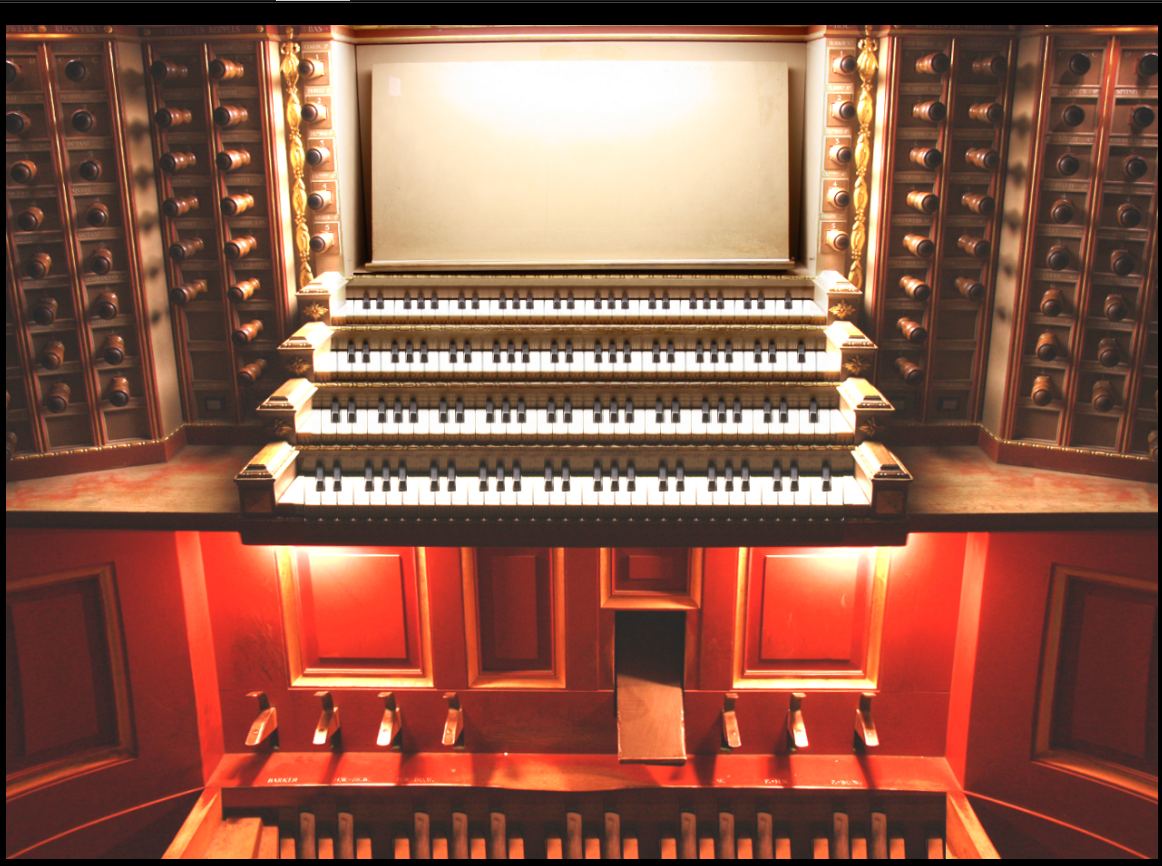
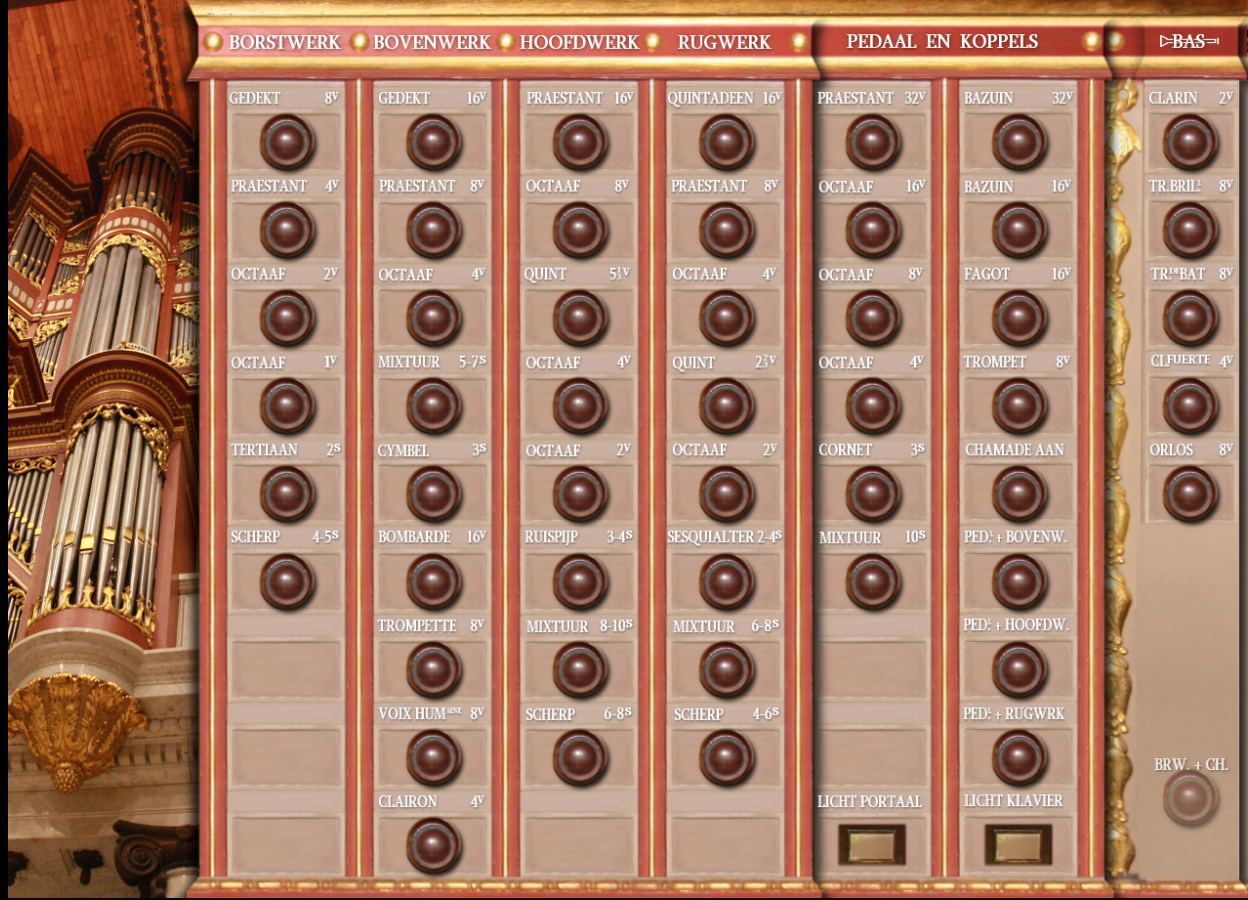
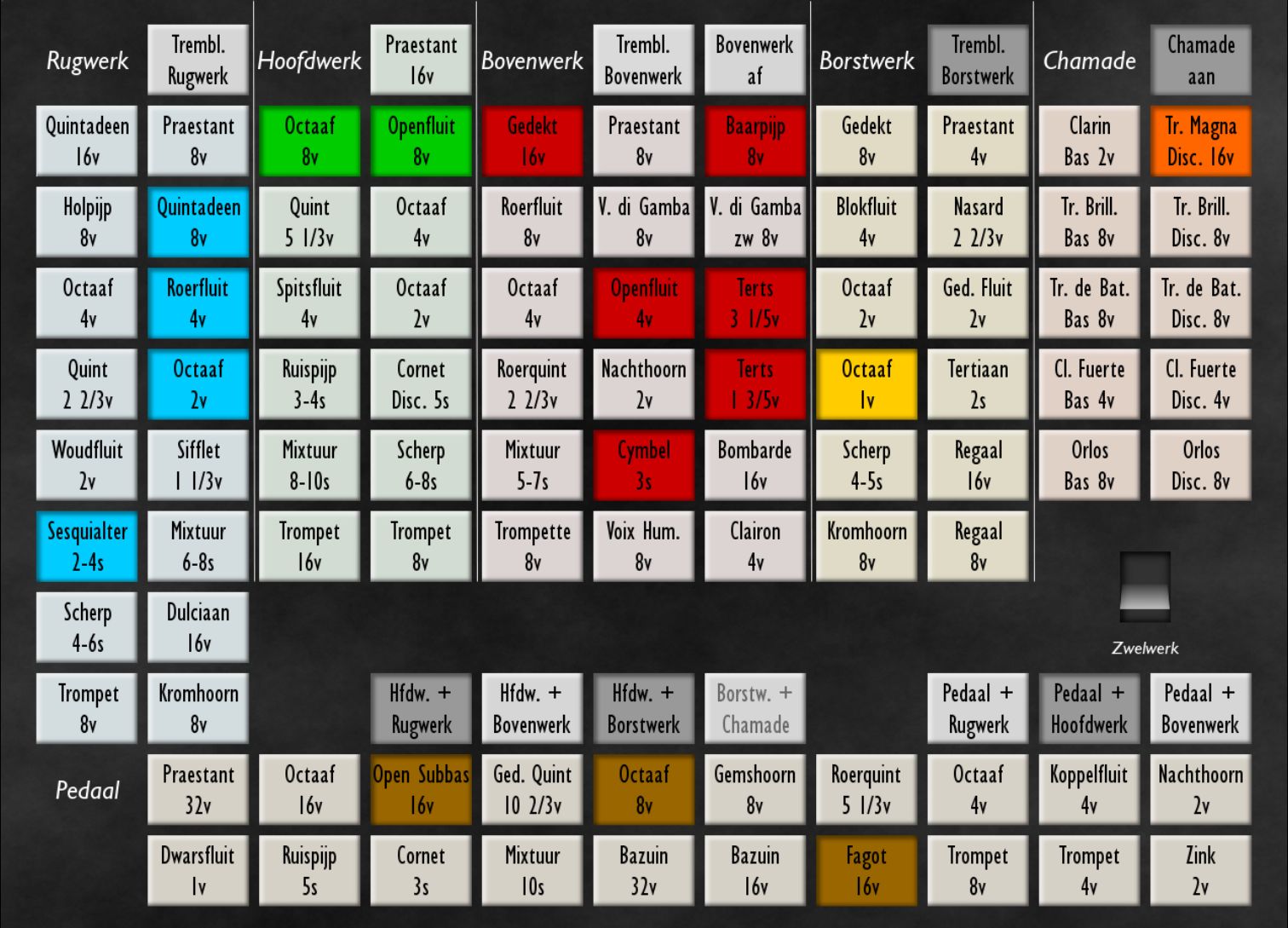

Requirements
The sample set can be used in Hauptwerk version 4.2 and higher, the Advanced version is necessary due to the size of the virtual instrument.
Surround: the surround recording uses 4 independent channels for each virtual pipe (for each sample). The sound of the organ pipes is captured by the front microphones, the church response by the rear microphones. The 4 channels are extracted from the recording and assembled to the sample set. The two front channels are used to supply the sound of the organ to the front speakers, while the 2 other channels offer the response of the church. You can use these two channels to feed your surround (rear) speakers. Please note, that at least 4 speakers are needed to reproduce the multi-channel audio.
the length of the reverb is approximately 5.5 seconds. Nonetheless, the organ retains very good clarity in the space and it stands out of the reverberation clearly.
Polyphony (CPU strength) required: at least 7000 simultaneously speaking pipes for smooth operation in tutti or plenum operations. Polypony set to 8000 is recommended. CPU of the type 6 Core i7-3930k or i7-3770 is a good choise to achieve this high performance. For smaller registrations about 3000 simultaneous pipes is enough, though.
RAM requirements (full surround, L/R split rank components loaded in mono):
*** please refer to the blog post for help with achieving these figures ***
16-bit: ca. 23,5 GB
20-bit: ca. 38,5 GB
24-bit: ca. 45 GB
To load on 48GB machines: load everything in 20-bit, while the most used ranks (8-feet principals, flutes and similar) try loading in 24-bit depth.
Attention: the sample set is huge and therefore when loading (especially for the first time) Hauptwerk may look like frozen for about 2 minutes. After that, normal loading dialog will appear. Please be patient when loading the organ!
Wet: For use in headphones or other 2-channels environment: please disable all the ranks marked by the word "rear" in the rank audio output dialog when loading the organ for the first time. By doing this, the rear ranks will be muted and only the two front channels will load. The RAM consumption is reduced to half.
RAM requirements (wet only):
16-bit: ca. 13 GB
20-bit: ca. 25 GB
To load on 16 GB RAM machines: you should mute all the rear ranks and use only the front portion of the sample set (i.e. the wet only option). Load all front ranks in 16 bits while the most used ranks try loading in 20 bit depth. To mute the rear ranks, see the screenshot for an illustration how to identify the rear ranks (there are two kinds - a normal rear rank and a tremmed rear rank), all of these may be selected and muted (by clicking on the box near to the "Rank enabled?" question and selecting "No".
Dry: samples are recorded from very short distance (mostly inside the organ case) using many channels. The result is offered as 24-bit, 48kHz dual-mono samples which can be used in self-reverberating venues (such as churches) or mixed with a digital reverb. Multi-channel approach is very much recommended for reproduction of the fully developed organ sound. It is not uncommon that at least a pair of speakers is used for each division, the more the better. Please note that the dry sample set is for specialized use, since the sound of dry pipes (if used as it is "out-of-the-box") is normally surprisingly unpleasant and harsh. For home use, the wet or surround sample set is recommended.
RAM requirements
full sample set loaded in 24-bits: 12.4 GB
full sample set in 16-bit: 6.7 GB
This Hauptwerk Sample Set is presented to you by Leonart Studio, an authorised reseller for the manufacturer Sonus Paradisi in Switzerland (shipping internationally). Enjoy this digitally sampled organ library for the use with Hauptwerk software and start expanding your historical organ collection today.
0
Total de artículos
CHF 0.00
Subtotal de productos
More Hauptwerk Sample Sets
-
Casavant, 1995 [Hauptwerk]
Proveedor:Sonus ParadisiPrecio habitual CHF 174.90Precio habitualPrecio unitario / por -
Reuter, 1928 [Hauptwerk]
Proveedor:Sonus ParadisiPrecio habitual CHF 473.00Precio habitualPrecio unitario / por -
Rotterdam Hoofdorgel, 1973 [Hauptwerk]
Proveedor:Sonus ParadisiPrecio habitual A partir de CHF 330.00Precio habitualPrecio unitario / porCHF 958.10Precio de oferta A partir de CHF 330.00Oferta -
Groningen, 1450-1740 [Hauptwerk]
Proveedor:Sonus ParadisiPrecio habitual A partir de CHF 658.90Precio habitualPrecio unitario / porCHF 1,681.90Precio de oferta A partir de CHF 658.90Oferta -
Goerlitz, 2006 [Hauptwerk]
Proveedor:Sonus ParadisiPrecio habitual A partir de CHF 328.90Precio habitualPrecio unitario / por -
Bückeburg, 1997 [Hauptwerk]
Proveedor:Sonus ParadisiPrecio habitual A partir de CHF 1.10Precio habitualPrecio unitario / por -
Brasov, 1839 [Hauptwerk]
Proveedor:Sonus ParadisiPrecio habitual CHF 418.00Precio habitualPrecio unitario / por -
St. Omer, 1717-1855 [Hauptwerk]
Proveedor:Sonus ParadisiPrecio habitual CHF 323.40Precio habitualPrecio unitario / porCHF 410.96Precio de oferta CHF 323.40Oferta -
Stellwagen organ, St. Marien, Stralsund (1659)
Proveedor:Sonus ParadisiPrecio habitual CHF 858.00Precio habitualPrecio unitario / por -
![Clavichord Model [Hauptwerk]](//artful.shop/cdn/shop/files/ss_clavichord.jpg?v=1724310155&width=533) Agotado
AgotadoClavichord Model [Hauptwerk]
Proveedor:Sonus ParadisiPrecio habitual CHF 33.00Precio habitualPrecio unitario / por


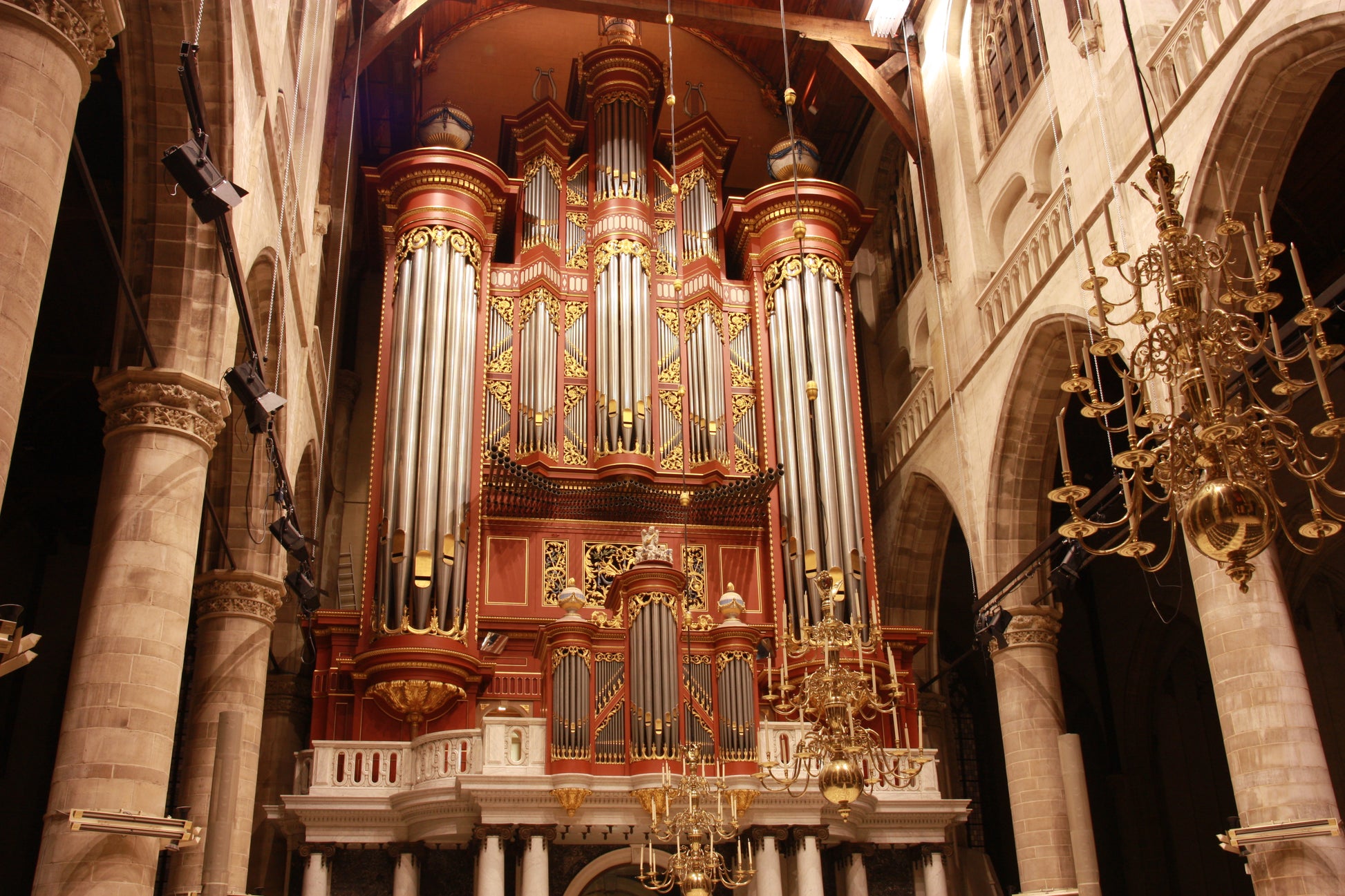

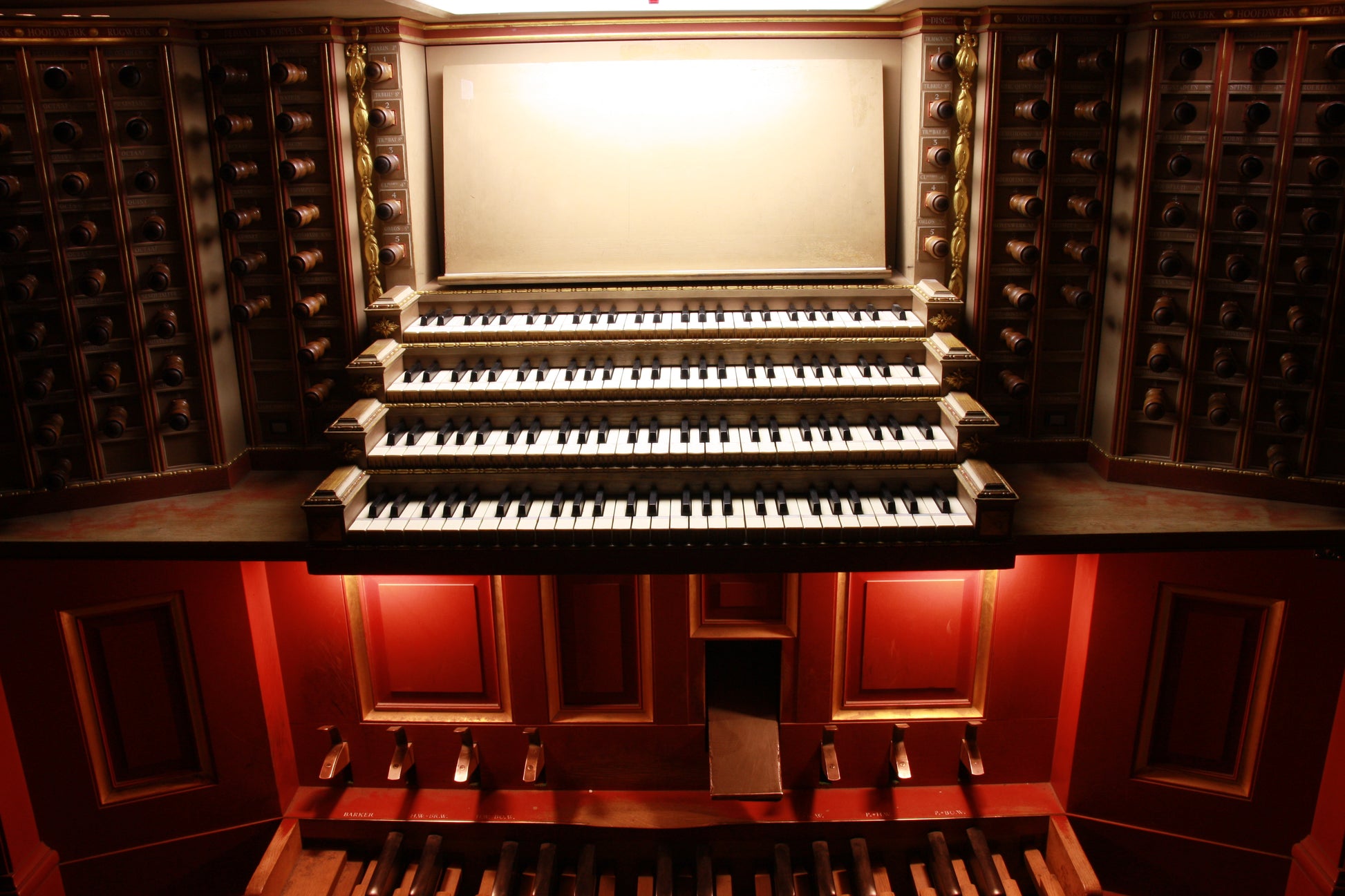

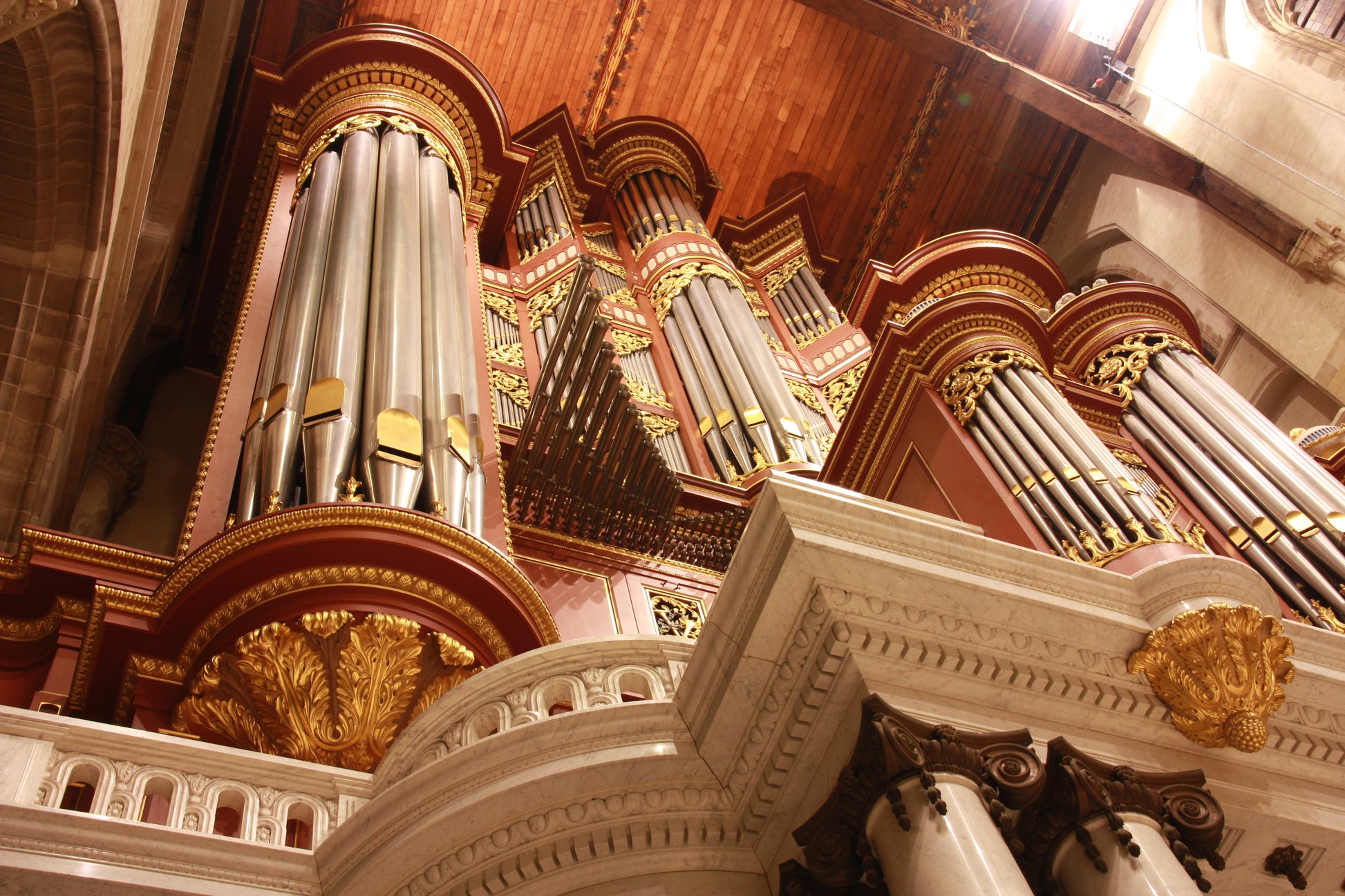
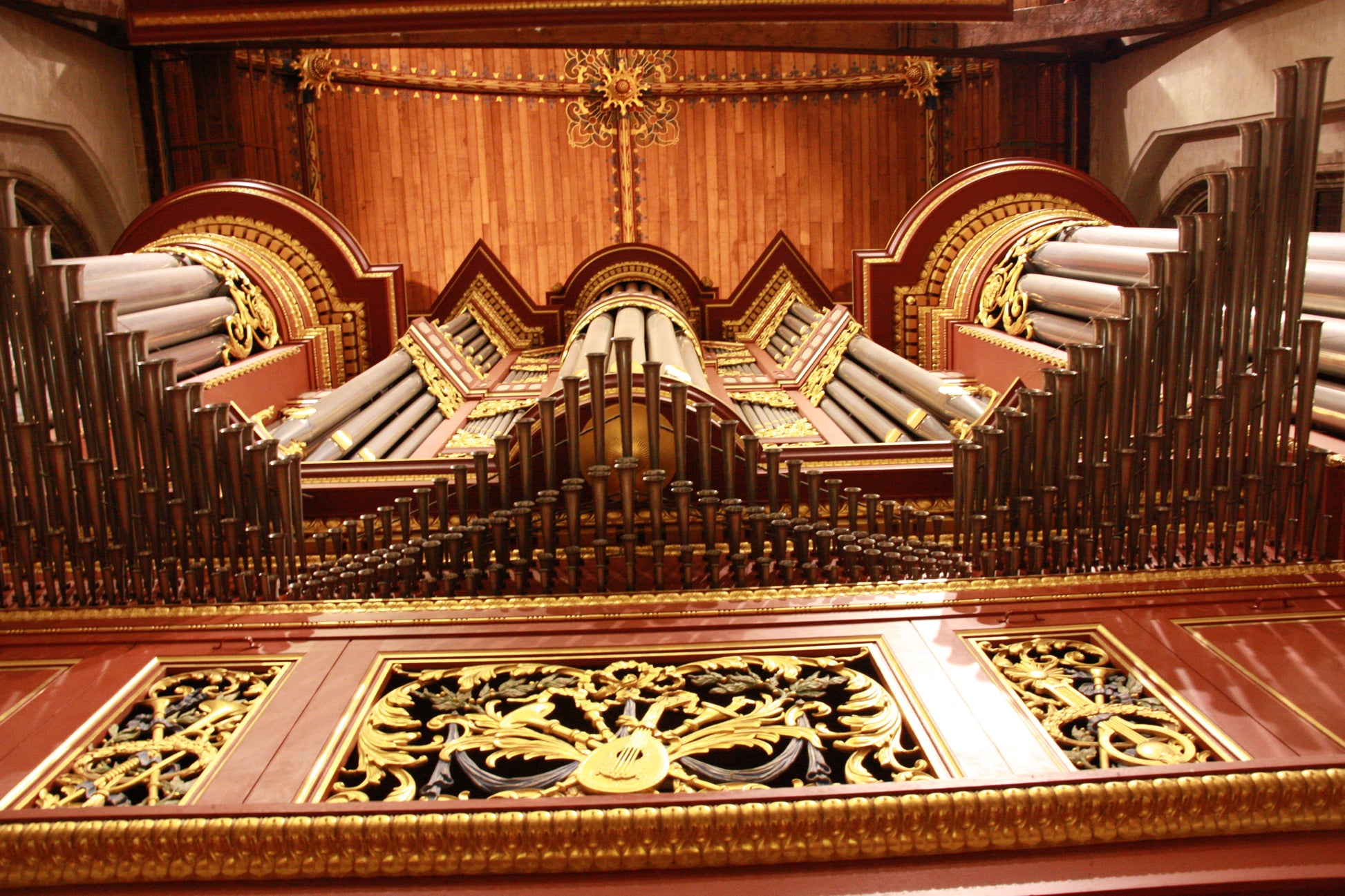

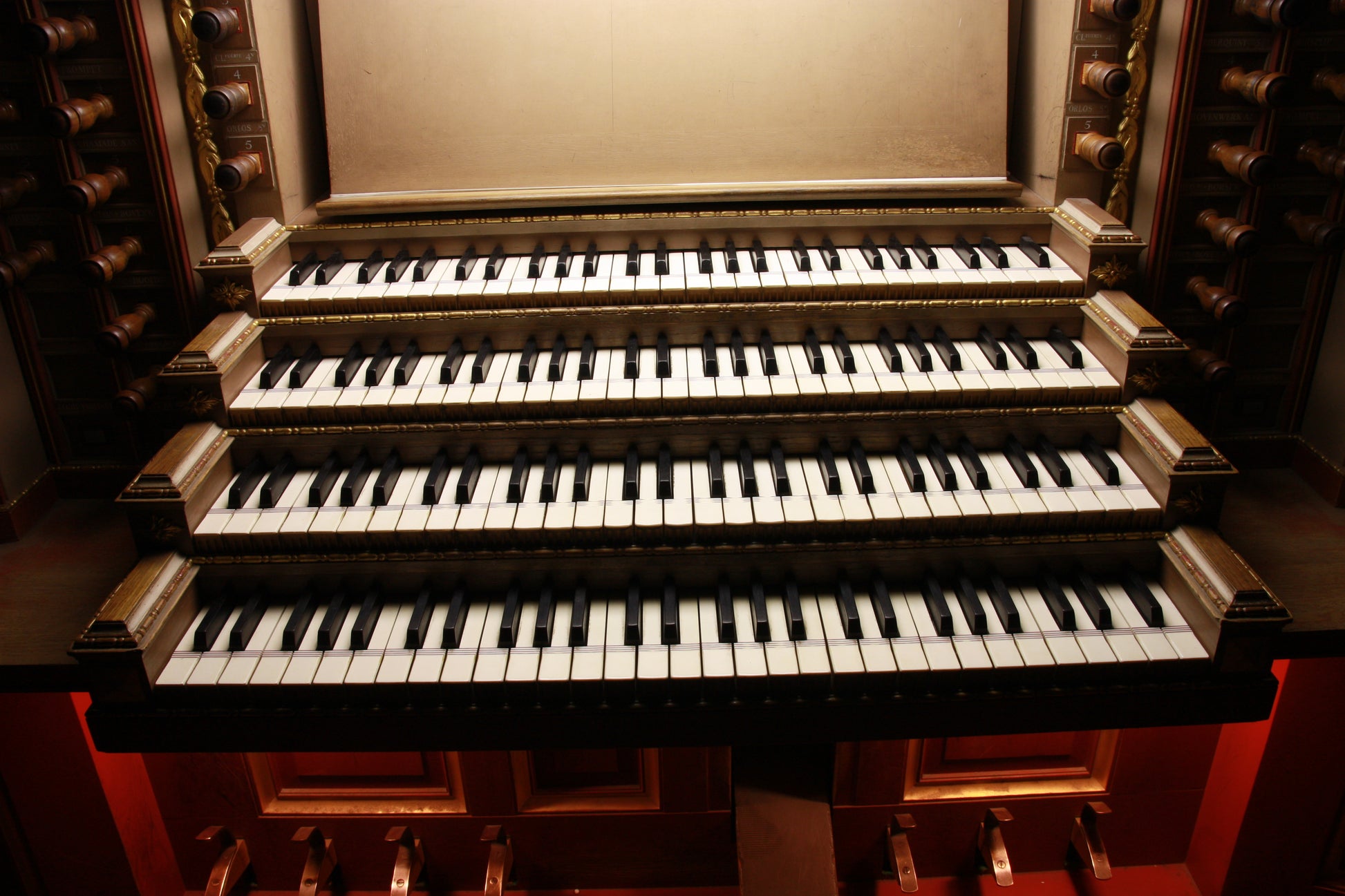


![Casavant, 1995 [Hauptwerk]](http://artful.shop/cdn/shop/files/ss_casavant1.jpg?v=1693319885&width=533)
![Reuter, 1928 [Hauptwerk]](http://artful.shop/cdn/shop/files/ss_Reuter1.jpg?v=1693321024&width=533)
![Rotterdam Hoofdorgel, 1973 [Hauptwerk]](http://artful.shop/cdn/shop/files/ss_RotterdamMain1.jpg?v=1693279529&width=533)
![Groningen, 1450-1740 [Hauptwerk]](http://artful.shop/cdn/shop/files/ss_Groningen1.jpg?v=1693275425&width=533)
![Goerlitz, 2006 [Hauptwerk]](http://artful.shop/cdn/shop/files/ss_goerlitz1.jpg?v=1692995837&width=533)
![Bückeburg, 1997 [Hauptwerk]](http://artful.shop/cdn/shop/files/ss_bueckeburg1.jpg?v=1692967628&width=533)
![Brasov, 1839 [Hauptwerk]](http://artful.shop/cdn/shop/files/ss_brasov1.jpg?v=1692967057&width=533)
![St. Omer, 1717-1855 [Hauptwerk]](http://artful.shop/cdn/shop/files/ss_omer1.jpg?v=1692904128&width=533)
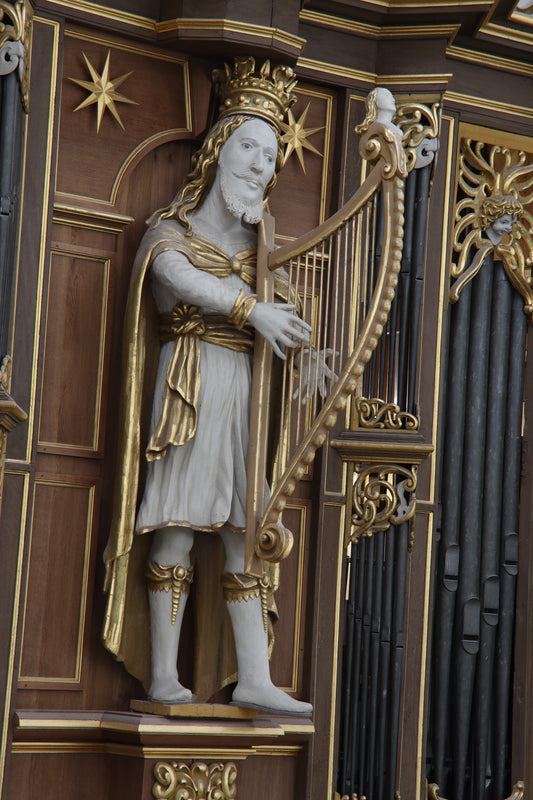
![Clavichord Model [Hauptwerk]](http://artful.shop/cdn/shop/files/ss_clavichord.jpg?v=1724310155&width=533)